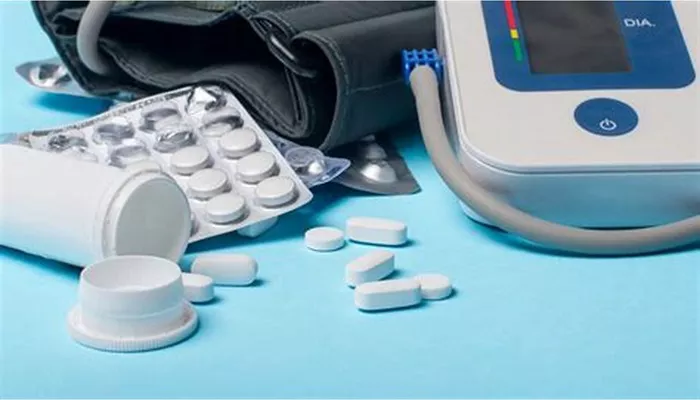Pulmonary hypertension (PH) is a condition where the blood pressure in the pulmonary arteries becomes elevated. This results from increased resistance in the pulmonary vasculature, which can lead to right heart failure. The normal mean pulmonary arterial pressure (mPAP) is less than 20 mmHg. PH is defined when the mPAP is 20 mmHg or higher at rest, measured by right heart catheterization.
Types of Pulmonary Hypertension
There are five clinical classifications of PH based on etiology:
- Group 1: Pulmonary arterial hypertension (PAH)
- Group 2: PH due to left heart disease
- Group 3: PH due to lung diseases or hypoxia
- Group 4: Chronic thromboembolic pulmonary hypertension (CTEPH)
- Group 5: PH with unclear or multifactorial mechanisms
Overview of Contraindicated Medications
Why Certain Drugs Are Harmful in PH
Some medications can worsen pulmonary vascular resistance, cause fluid overload, or depress cardiac function. These effects can be dangerous in patients with PH. Therefore, identifying and avoiding contraindicated medications is essential for patient safety.
Cardiovascular Medications to Avoid
Beta-Blockers
Non-selective beta-blockers can lower heart rate and cardiac output. They reduce the ability of the right heart to compensate for increased pulmonary pressures. They are generally avoided in PH patients, especially those with right heart failure. Cardioselective beta-blockers may be used cautiously in some cases, particularly if comorbidities like coronary artery disease exist.
Calcium Channel Blockers (Non-Dihydropyridines)
Diltiazem and verapamil have negative inotropic effects. They can decrease right ventricular function. These agents are contraindicated in most PH patients. Only patients with positive vasoreactivity testing might benefit from long-acting dihydropyridine calcium channel blockers like amlodipine or nifedipine.
Respiratory and CNS Medications
Opioids
Opioids can cause respiratory depression. They reduce ventilation and increase CO2 retention. Hypoxia and hypercapnia can worsen pulmonary vasoconstriction. Chronic use also increases the risk of right heart decompensation.
Benzodiazepines
These drugs depress the central nervous system. They may reduce respiratory drive. Like opioids, they can contribute to hypoxia and worsen PH. Their sedative effects can also delay symptom reporting and diagnosis in emergencies.
Sleep Aids and Muscle Relaxants
Medications like zolpidem and cyclobenzaprine have sedative properties. They may depress breathing. Avoiding these drugs is recommended unless no alternatives exist. Non-pharmacologic sleep hygiene is preferred.
Anti-inflammatory and Analgesic Agents
NSAIDs
Non-steroidal anti-inflammatory drugs like ibuprofen and naproxen can cause sodium and fluid retention. This can worsen edema and lead to volume overload. Renal dysfunction, a common issue in PH, may be exacerbated.
COX-2 Inhibitors
These drugs carry similar risks to traditional NSAIDs. They may worsen blood pressure control and renal function. Their use is discouraged in PH patients with right heart strain.
Drugs Affecting Pulmonary Vasculature
Decongestants
Medications like pseudoephedrine act as sympathomimetics. They can raise systemic and pulmonary pressures. Nasal sprays or oral decongestants may trigger vasoconstriction and are unsafe in PH.
Appetite Suppressants and Stimulants
Drugs like phentermine and amphetamines increase catecholamines. They may induce pulmonary vasoconstriction and hypertension. Their chronic use is linked to development of PH. These should be strictly avoided.
Hormonal and Reproductive Drugs
Estrogens and Oral Contraceptives
Estrogen-containing contraceptives increase the risk of thrombosis. In PH patients, thromboembolism can worsen pulmonary pressure. Progesterone-only options are safer alternatives.
Testosterone Supplements
Androgens may increase hematocrit and blood viscosity. These effects raise vascular resistance. Such changes can strain the right ventricle and should be avoided.
Immunosuppressive and Chemotherapy Agents
Interferon-alpha and Interleukin-2
These agents can trigger inflammation in the pulmonary vasculature. This may lead to or worsen PH. Regular monitoring is essential if these drugs are necessary.
Tyrosine Kinase Inhibitors (TKIs)
Some TKIs, such as dasatinib, have been linked to drug-induced PAH. They can cause endothelial injury and vasoconstriction. Discontinuation usually reverses the effect, but early identification is crucial.
Antidepressants and Psychiatric Medications
Tricyclic Antidepressants (TCAs)
These drugs can cause cardiac arrhythmias. In PH patients, they may precipitate right heart strain. Safer alternatives like SSRIs are often preferred.
Atypical Antipsychotics
Drugs such as olanzapine and clozapine can cause weight gain and metabolic syndrome. Obesity worsens hypoxia, especially in PH patients with sleep apnea. These agents should be used with caution or avoided.
Over-the-Counter and Herbal Supplements
Supplements with Stimulant Properties
Ingredients like ephedra and yohimbine may raise blood pressure. They can increase pulmonary vascular resistance. These are particularly dangerous in undiagnosed PH patients.
Licorice Root
This supplement can cause hypokalemia and hypertension. It increases mineralocorticoid effects. These can aggravate PH symptoms.
Strategies to Prevent Adverse Drug Events
Thorough Medication Review
Healthcare providers must review all patient medications regularly. Even over-the-counter drugs and herbal remedies should be documented.
Clear Communication with All Care Providers
Specialists, pharmacists, and primary care providers should coordinate care. Consistent information avoids duplication and dangerous drug interactions.
Patient Education
Patients should understand which drugs to avoid. They must know the symptoms of worsening PH and when to seek help. Written lists of contraindicated drugs can be helpful.
Conclusion
Many drugs are contraindicated in pulmonary hypertension due to their effects on blood pressure, respiratory drive, and cardiac function. Avoiding harmful medications is critical in managing PH and improving patient outcomes. Comprehensive medication reviews, careful prescribing, and patient education are essential strategies for safety.
Related topics:


